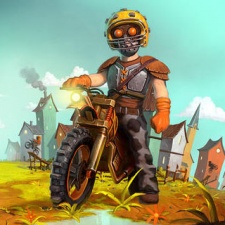Knowing when to make the leap from console to mobile is always a difficult decision.
It's particularly the case when you have a high fidelity experience and a highly committed and vocal fanbase.
Matching their expectations with what have to be platform-appropriate design, controls and business model takes time and dedication.
In part, that's the reason we've been waiting so long for a mobile version of physics stunt bike racer series Trials.
Finally arriving for iOS in spring 2014 in the shape of Trials Frontier, it's successfully managed to blend the best elements of the console version of the game with the intuitive controls, short sessions times and F2P monetisation that are now required on mobile platforms.
We caught up with Finnish developer RedLynx's lead game designer Justin Swan to find out more about the process.
Pocket Gamer: Given RedLynx is an experienced mobile developer, why has it taken you so long to make a mobile version of Trials?
Justin Swan: It's true. We released our first iOS game Monster Trucks Nitro way back in 2009, so we have definitely been doing iPhone games for some time. We really did hold back on doing a Trials game until the time was right.
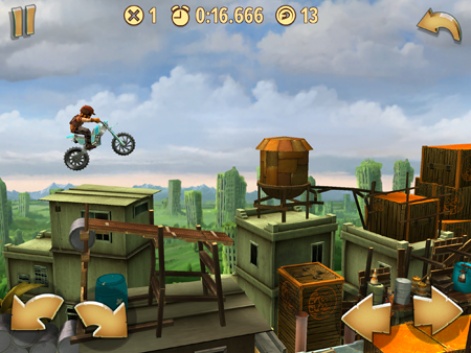
The difference between then and now is the technology, so even while the form factors of the phones may look similar, the underlying hardware reached a point where it could deliver a physics simulation and graphics experience that we felt was worthy of the Trials name.
How did the large number of low quality Trials clones already available on mobile influence your decision making when it came to Trials Frontier?
We really didn't pay much attention to them, other than to point out how many of them there were and how popular some of them had become when we were making our case to headquarters that now was the right time for us to do Trials Frontier.
Fortunately they didn't need much persuading!
What was the reason behind the steampunk Wild West setting, which isn't the first thing you'd think of for Trials?
Although it may not be immediately obvious, the Trials franchise has always had a coherent and connected world behind it.
Because we launched Trials Fusion (for console and PC) and Trials Frontier (for mobile) within weeks of each other in 2014, we decided from the start that a fun way to link the two games would be through a shared world though with different art styles.
The solution was to have Trials Fusion take place in a shiny, optimistic future whereas Frontier takes place a century or two after that, when things have gone a bit off the tracks. So what happened in between?
This isn't just backstory for hardcore players, it has good, positive effects for players of both games.

For example you can send yourself Rider Gear back and forth between the two games, using the Time Capsule feature. So it's fun linking the games like that - you might be on a shiny city track in Fusion only to realize a similar track in Frontier has you bouncing over the ruined version of that track.
Given the strong audience for the Trials series, did you consider making a paid game for mobile that would be more in line with the PC/console games?
Certainly we considered it, but one could turn the question around like this: if most of the releases and revenues on console are of premium games, why would you make a free-to-play game there?
You have to adapt your game to the medium.Justin Swan
You have to adapt your game to the medium: we can't expect players to use Xbox controllers with their iPhones, we had to create a touchscreen interface.
And we can't expect the mass of players to pay for our game when they have already voted with their pocketbooks: they have moved the market, almost in its entirety, to the free-to-play model.
Also it was a great opportunity for us to bring Trials to a much broader audience.
When you decided you were going F2P, what was your thinking about monetisation?
First and foremost to do it right, to do it fairly, to do it faithfully to the Trials brand so that the essence of competition remains at the heart of the game.
There is no way we could have pay-to-win mechanics and still call it a Trials game. So once we established that, it was a matter of designing the specifics.
You've gone for a fairly traditional 2 currency system - one for parts upgrades, one for time - and an energy system. Why did you think this was the best approach?
We knew that Trials would be a great game at the core, and this is what we really wanted to focus on polishing as much as possible.
Sticking with more traditional F2P model and not trying to reinvent the wheel there made it easier to focus more on the gameplay instead of iterating over and over on the F2P components.
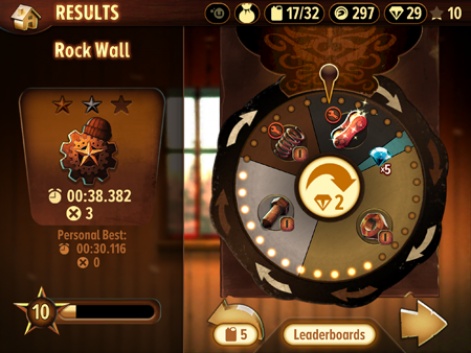
We also wanted to ensure that the game, without spending a penny, feels really great and gives a ton of enjoyment to players. Then, players who do decide to will just have an even better experience in whichever way they decide to invest their purchase.
The hard/soft currency system really played well to these ideals.
Trials is a fairly hardcore game on PC/console, so how did you approach bringing it to a much more casual mobile audience?
The first thing we looked at was what drives the different types of players across different platforms.
We know how well the skill mastery and competition worked on console with the core market, but also realize that the more casual mobile player may not be driven by these same things.
With Trials Frontier we wanted to maintain the sense of mastery and competition, but also add in a feeling of exploration, improvement not just through your own skill, a sense of purpose through a story line, and many other reasons to play.
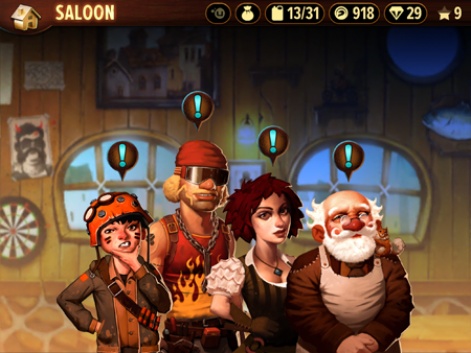
There was also a lot of work that went into tuning the first couple hours of gameplay so that players were gently introduced to the different skills that Trials' gameplay requires and not overwhelmed by what can become a very difficult game.
Crashing is a major occurrence in the game, so how did you try to make this failure state seems less like a failure?
One of the really important things we've always focused on with Trials is how we handle the failure state and how you make sure the game can at later stages be difficult but not frustrating.
Instant resets, checkpoints after each major obstacle, these are things geared toward that exact purpose.
When we first started talking about Trials Frontier going F2P we very quickly realized that crashing could be in no way tied to monetization and had to be as painless as possible. This is why we have the instant restarts, we have the constant checkpoints, and we have no real penalty at all for crashing once you enter a race.
Most F2P games are about playing the metagame rather than the level itself. Trials is different because it's all about the level, so how did you try to also build a metagame around this?
Having such a gameplay-heavy F2P game has certainly been one of our challenges when looking at what types of games are really succeeding the market right now.
Having such a gameplay-heavy F2P game has certainly been one of our challenges.Justin Swan
It's a double edged sword of sorts in that it appears that a strong gameplay component is a weakness in big F2P games, yet it is by far our biggest strength.
We realized that there would have to be some level of a metagame for Trials Frontier, something beyond a simple menu list of tracks to play, and it quickly became apparent that going for a mission structure would give us lots of flexibility and the ability to reuse our tracks in many interesting ways.
We also introduced the crafting and upgrade systems for each bike to build a stronger sense of ever increasing improvement and investment in your game.
In the end though it all came down to maintaining the super strong core that is the Trials' gameplay and finding ways to accentuate that with a meaningful metagame wrapper.
Trials Frontier is one of the few F2P games you can play without a connection. Why did you build it this way?
This was a big debate internally when early planning stages for Frontier were underway and what it really came down to was making the game that we, as gamers, would want to play.
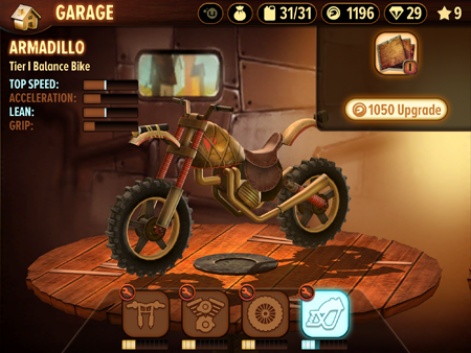
This means a game that we can play on a commute outside of a phone connection, maybe on a long flight, or on our iPods outside of a wi-fi connection.
Roughly how long did development take and what significant tools did you use?
From concepting and pre-production it took about two years, although we did not have a full development team on the project throughout that entire time.
In terms of tools, the most significant piece of technology we used is our in-house mobile game engine, called GeneTek, which we had developed earlier for MotoHeroz and really polished and expanded in a big way for this game.
It is not the same engine we use for Trials Fusion incidentally, that simply wouldn't run on the current generation of mobile hardware.
But the fact that some people think both games use the same engine, or that people feel the physics in our game feel so responsive and natural and Trials-like, compared to some of the clunkier clones out there, is a tribute to the talented game programmers on our team here.
What were the biggest challenges you had to overcome during development?
We know how to make a Trials game, so probably for us on this project the biggest challenge was balancing and fine-tuning the gameplay in tandem with the free-to-play mechanics, because both have to feel natural and right to the player.

That's why our soft launch period in Finland and Canada was so valuable, because we could see right away where players were quitting or dropping out, what kind of offers players found reasonable as an in-app purchase and what they ignored completely, that kind of thing.
At what stage were you when you went into soft launch and what did you learn from the feedback you gained?
At soft launch we had about two thirds of our story content in place, around 40 tracks (we now have over 100), and we were missing several of our systems, such as the Slot Machine and ANBA robot.
Other than that everything was already there!
We are really lucky in that we have some really great fans that are super active and vocal on our forums so we learned quite a bit from them which helped tune the game a lot for worldwide release.
Offering things like special bundles for players, balancing the difficulty of opponents or specific tracks, and making changes to our very early gameflow are all super helpful changes that came out of our soft launch period.
We're still learning a lot of surprising things from the game while it's live as well, and all of this is feeding back into the features and improvements that are coming up soon.
What elements of Trials Frontier are you most happy with?
First and for most would have to be the overall reception of the game and just how many new people have been introduced to the world of Trials through Trials Frontier.
We have no doubts that the core gameplay of Trials Frontier is the best physics racing experience out there on mobile, so we're really happy with how we've been able to take that gameplay and adapt it to the touchscreen.
We're also really happy about some of the systems we've been able to include in Trials Frontier, particularly the ANBA system which is always pushing players to slightly improve their best times, something that has always been core to the Trials franchise.
How happy have you been in terms of the reaction to Trials Frontier, both in terms of initial downloads and long-term monetisation?
It's been great. The number of overall downloads far exceeded our expectations and continues to grow organically, spiking with each new update of which there have been six major ones to-date.
We've seen great retention and we've been adding things to the game players have been asking for, like new rider outfits, bundles, and game expanding features.
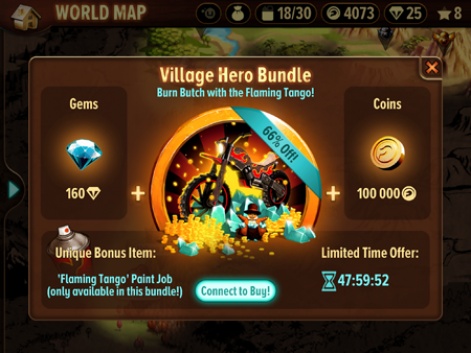
As for reception, our average rating in the App Store is extremely high, showing players are very happy with the game. So yes, we're really happy with the performance.
How you do run the game as a service and what can you tell us about your update plans?
We're committed to Trials Frontier for the long-term, with a number of exciting updates coming.
Three are already in development or testing and we have a roadmap that extends well beyond that. There's a lot we do in the console Trials games that we haven't done yet in the mobile version, so there's a lot we can still add, things we've talked about before like bigger asynchronous multiplayer.
Thanks to Justin for his time.
You can download Trials Frontier for free via the App Store [iTunes link].

